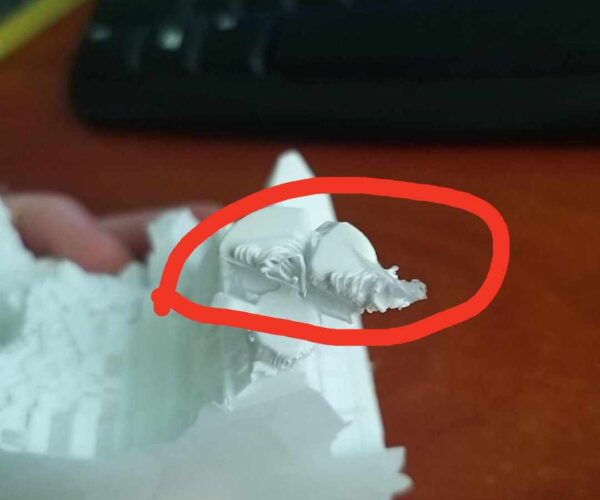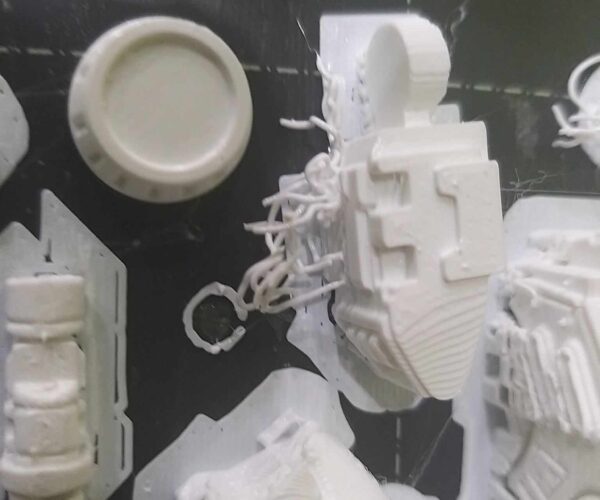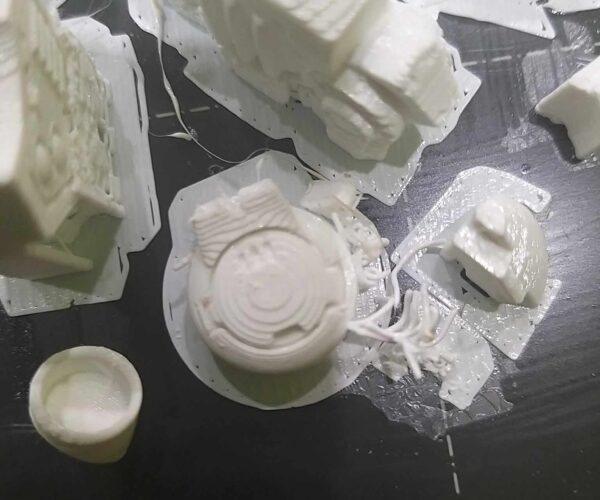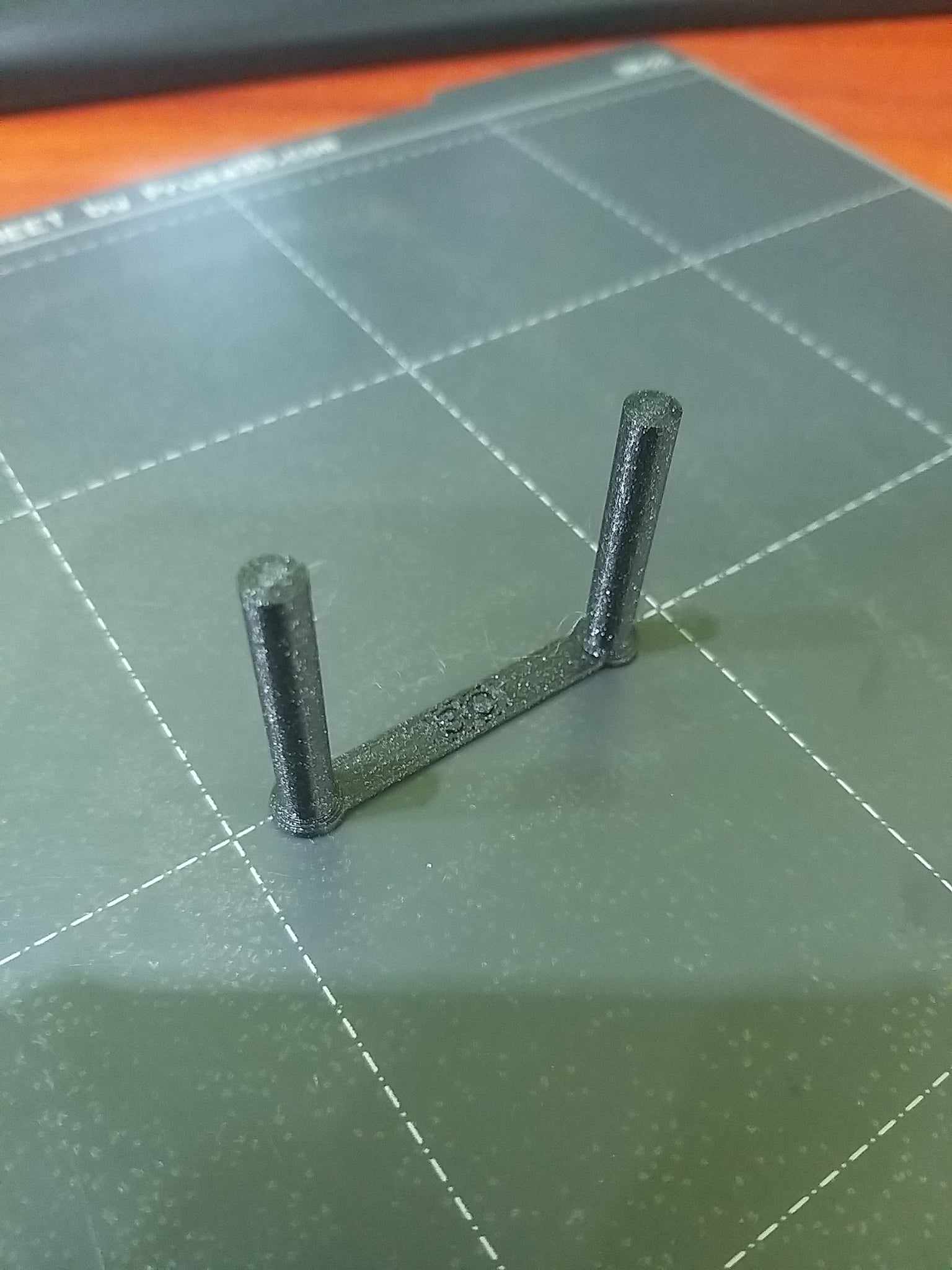Stringing with PLA, uneven surfaces with ASA
Hello!
I bought MK4 kit with enclosure in september. This is my first printer so maybe it's rookie mistakes but I can't fix it alone. My plan was to learn printing using PLA then switch to ASA. So far all my prints are failure. Starting with PLA, I print mainly on default setting in prusa slicer, but to try to solve problems in every one I tried different printing speeds and cooling.
1.1. PLA: Spaghetti artifact problem (unsolved)
1.2. PLA: Layer shift (unsolved) - I noticed shift is around 10mm give or take 2mm from first layer. It doesn't occur always on the same height (I thought maybe trapezoidal screw is damaged mechanically but it's not and height of shifted layer differ). I read this tread but I think everything is fine?


1.3. PLA: Stringing (unsolved) - on this one I worked with the help of my friend and with those threads:
https://help.prusa3d.com/article/stringing-and-oozing_1805
Tried different temperatures (even tower with switching nozzle temperature), different printing speeds, z-hop changes, different retractions. Temperature tower from here, showed no strining at 190 Celsius, but benchy (pic) printed in that nozzle temperature still had strings. Termistor has 100K ohm.
Due to failures I decided I would try with ASA, maybe PLA isn't for me.
2.1. Uneven surface (unsolved):
When I was printing with PLA I printed part of dice tower:

Notice the line on the side. This is similar part with ASA:

I tried some changes and I stopped prints after failure of this top layer:
From bottom:
15% infill squares, default ASA printing setting in prusaslicer,
15% infill triangles, 0% fan at all times except bridges
15% infill stars, 0% fan at all times, bridges included
25% infill gyroid, 0% fan at all times, brdiges included, additional top layers, 2 layer raft
Extra pic of 3rd from bottom (to be clear surface is still very uneven):
All prints were in enclosure, humidity <20%, temp around 32 Celsius.
Benchy pic (one on the left was alligned with Y axis, one on right with X axis)
Alligned with Y axis:
Alligned with X axis:
This is my first printer. I didn't had any sucesfull print. This is my first post. Be gentle. Please help. 🙁
Your print sheet is dirty. This is causing the warping ripples and possibly some of the layer issues. Clean the sheet with dishwashing detergent (Dawn/Fairy) and plenty of HOT water, rinse well and dry with a fresh paper towel. Handle by the edges only. Do not use glue for PLA.
The commonest cause of stringing is damp filament, look up threads here about drying it.
White and very pale filaments are always the trickiest to print. Try clear, natural or dark coloured filaments until you are getting good results.
Cheerio,
RE: Stringing with PLA, uneven surfaces with ASA
if you already tried printing with opened enclosure, try with ohmometer resistance of the thermistor in the hotend, could be that stringingmis just related to the trong temp...
After every print I clear sheet with isopropyl alcohol and microfiber cloth.
Give it a thorough wash - IPA doesn't shift everything. Use IPA between prints and HOT water with detergent as soon as problems appear.
If I don't use glue parts tend to warp and bend, for example:
Glue is used to *reduce* adhesion with filaments that stick too tightly to the PEI. You shouldn't need glue for PLA...
I already tried to dry my PLA in oven. Still stringing.
Ovens are a last resort, they are not efficient unless the air is exchanged, most fan ovens recirculate the air so after the first minute or so all the air is already damp and drying slows to a crawl. Leave the door open a crack and dry for a few hours at 50°C.
Cheerio,
RE: Stringing with PLA, uneven surfaces with ASA
Thermistor resistance is ok, I checked it.
RE:
I washed sheet with water and detergent. I opened brand new sealed tester PLA which i get with my printer, result: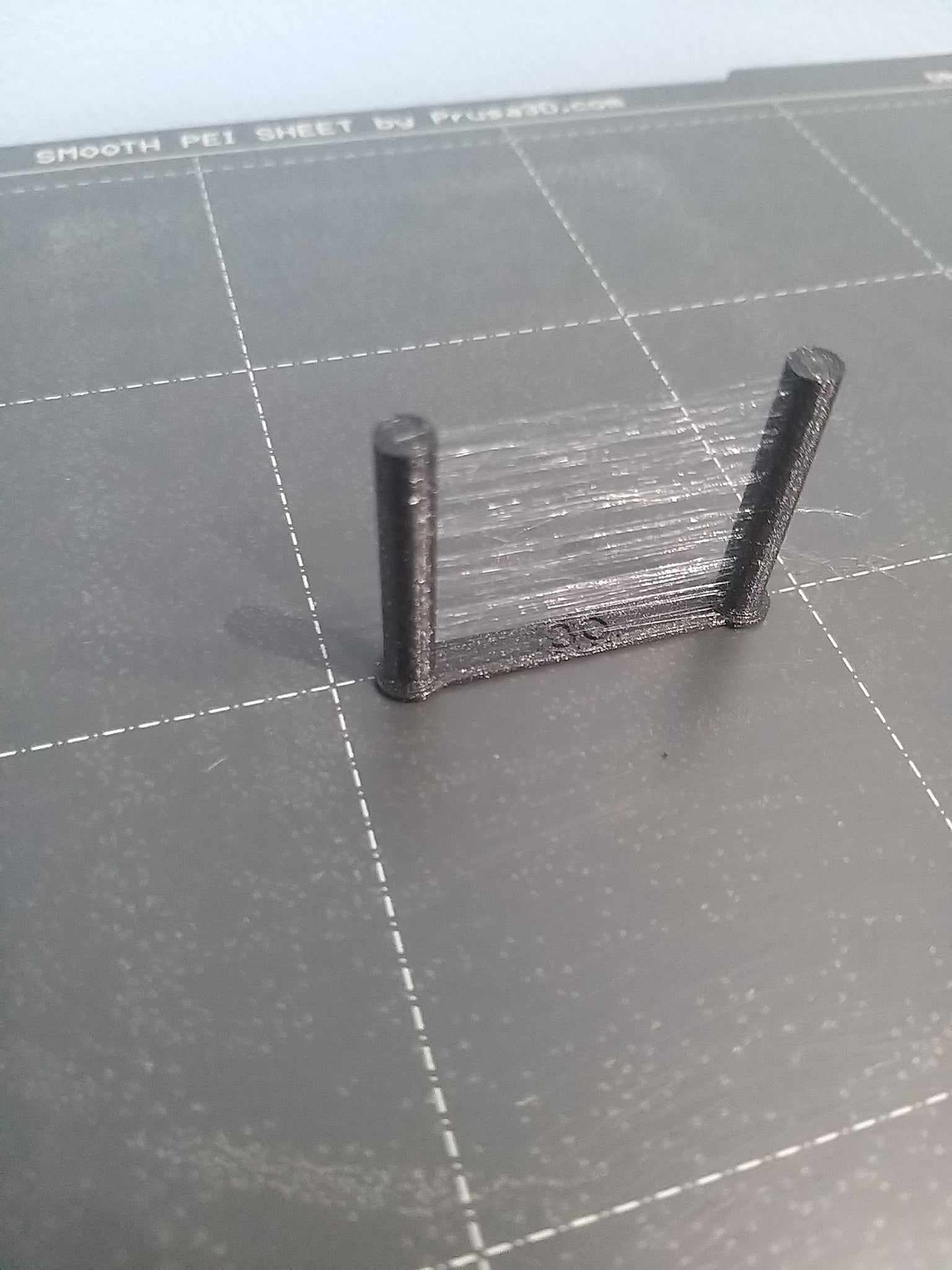
I think it's nothing to do about humidity.
Also what about ASA problems? What do I do wrong?
RE: Stringing with PLA, uneven surfaces with ASA
I do not own an Mk4 but those dots on the sheet don't look normal. Either your sheet is still dirty or has been treated pretty harshly by your printer.
Its good though if the stringing issue has been resolved.
Regarding ASA, be aware that unlike PLA, ASA is really sensitive to air drafts and even if there are no drafts, I would recommend printing it only with a printer enclosure. If you don't, then use absolutely minimal part cooling, as little as your object and overhangs allow. The more you cool, the worse the layer adhesion will be. Also warping is considerably more challenging with ASA.
You can give ASA a try if you want but especially in case of not having an enclosure I would recommend PETG instead for functional prints which can also be used outdoors as both materials can handle UV exposure. PETG is also best with an enclosure but still works fine without one as well.
Mk3s MMU2s, Voron 0.1, Voron 2.4
